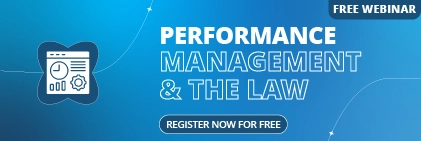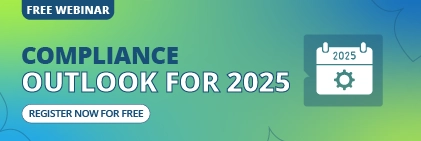Risks are part of today’s world. They can be cybersecurity breaches, regulatory changes, or unexpected sudden market shifts. For HR managers and business owners, handling these risks well is key to protecting your organisation’s future. That’s where a risk-aware culture helps. It’s not just a list of rules. Instead, it weaves risk management into your organisation’s heart and enables all employees to identify and address potential risks effectively.
Why does this matter? A risk-aware culture helps decision making, boosts resilience, and drives sustainable growth. We’ll explore what it means, why it’s essential, and how you can build it in your organisation. With practical steps and real scenarios, we’ll showcase a roadmap tailored for businesses. Let’s explore establishing a workplace where we don’t fear risk but instead manage it confidently.
What is a Risk-Aware Culture?
A risk-aware culture isn’t just policy documents, it’s a process where all employees can identify and address potential risks effectively. It’s built into how the organisation works on a day to day basis. Employees don’t wait for problems to arise, instead it gives every employee the ability and confidence to recognise and deal with possible risks. This forward-looking approach safeguards the business and ensures readiness for unexpected events. As a result, the organisation gains the tools and awareness to create plans that strengthen its resilience and flexibility.
Organisations with a strong risk-awareness culture are better positioned to effectively handle challenges like data breaches and compliance failures. Although challenging to navigate, this shouldn’t be mistaken for a risk-averse culture – which is one that aims to eliminate risk entirely, often at the expense of growth.
A risk-aware approach, by contrast, embraces calculated risks and well-considered opportunities, striking a balance between caution and action – much like launching a product only after thorough market research. This aspect ensures readiness, preparation, and enables the workforce to be better organised in terms of direction.
A risk-aware culture offers huge benefits for business owners and HR managers. By managing risks early, you avoid costly issues and improve your bottom line. A risk-aware company also earns trust from clients and partners. This supports long-term growth and aligns with your future goals. Involving staff in risk processes boosts employee engagement. This lets employees take ownership of their roles, helping them feel more valued. By teaching employees about regulations, their compliance will improve, lowering legal risk and building a strong reputation. It can also help mitigate talent-related risks, such as turnover, helping to maintain team stability. For business owners, the reward is higher profits.
Why is this important? It allows you to:
- Identify threats early and act before they escalate.
- Make smarter, risk-informed decisions.
- Build a resilient organisation that thrives amid uncertainty.
- Encourage innovation by taking calculated risks confidently.
Difference Between Risk-Aware and Risk-Averse Cultures
A risk-aware culture is not the same as a risk-averse one. Each approach comes with its own set of opportunities and challenges, and the risk-aware mindset is no exception. Think of it as a deliberate dance with risk, balancing ambition with caution. While a risk-aware company might move forward with launching a bold new product after carefully evaluating potential pitfalls, a risk-averse company may choose to avoid the risk altogether, shelving the idea entirely. Understanding this distinction empowers you to cultivate a workplace culture that is both dynamic and forward-thinking.
Why is a Risk-Aware Culture Important for Your Organisation?
Benefits for HR Managers:
- Boosted Engagement: Employees who contribute to risk management feel valued. This increases morale.
- Stronger Compliance: Awareness reduces violations, keeping risks low.
- Stable Workforce: Retain top members by identifying talent risks early.
Benefits for Business Owners:
- Higher Profits: Proactive risk management saves money.
- Better Reputation: A risk-savvy organisation earns trust from stakeholders and potential clients.
- Long-Term Growth: Managing risks aligns with future goals.
Steps to Build a Risk-Aware Culture
Promoting a culture where risk evaluation is at the forefront of business operations requires a defined approach that includes the entire organisation. Commitment from the top is where it all starts. Executives need to lead the initiative, demonstrating their commitment. Then, employee involvement along with training ensures clarity in risk identification and management. Treating risk management as part of everyday work rather than a separate process is critical. Continuous growth through monitoring keeps the culture dynamic and responsive.
This helps prepare for more in-depth plans. Integration creates new norms, training equips employees with new skills, and the tone is established by leadership. With this model, risk-savvy organisations will be able to respond to shifts regardless of whether you are an HR Manager focused on compliance or a business owner driving enduring resilience.
Step 1: Leadership Commitment
-
Leadership commitment is the core of a risk-aware culture.
From a leadership perspective, risk awareness requires senior executives to set the tone and embody the integration of risk awareness into discussions and considerations within the organisation. As much as implementing change is useful, championing the change helps set the tone for employees to match and follow.
-
Role of Senior Management
- Leading by example with risk-aware decisions.
- Investing time and resources in risk initiatives.
- Weaving risk management into the company’s vision.
-
Communicating the Vision
- Explain why risk awareness matters to everyone.
- Share stories of risks successfully managed.
- Invite open discussions about potential threats.
Step 2: Employee Engagement and Training
A risk-aware culture relies on engaged, trained workers. Clear, tailored training help frontline staff spot daily risks, like safety issues, while managers tackle bigger threats, such as market changes. Hands-on workshops teach teams to find risks. Practice sessions, real life scenarios, turn ideas into real skills. This keeps everyone ready. For HR, this boosts teamwork and ensures rules are followed, cutting legal risks and building a stronger, safer workplace.
To build a risk-aware culture, train your team with workshops on identifying and handling risks, online training for easy learning, with real-life scenarios to practice responses. Create a workplace where staff can report risks without fear, learn from mistakes, and are rewarded for identifying potential risks.
Step 3: Integrating Risk Management into Daily Operations
To build a risk-aware culture, blend risk management into your daily work. Start by regularly assessing risks. Use tools like SWOT analysis to find strengths, weaknesses, opportunities, and threats, and try to brainstorm threats during planning meetings. Plans with a clear purpose should be made. Assigning managers specific tasks, such as checking on vendors to prevent supply delays, will help to whittle down the largest tasks first.
-
Risk Identification and Assessment
- Hold regular brainstorming sessions to identify risks.
- Include all departments in the process.
- Use simple tools like a SWOT analysis to evaluate risks.
-
Risk Mitigation Strategies
- Prioritise the most serious risks.
- Write clear plans to deal with them.
- Check and update plans often.
Step 4: Monitoring and Reviewing
A risk-aware culture thrives on constant monitoring and review. Set KPIs like risks mitigated or training uptake to gauge progress. Regular feedback via surveys or team talks reveals gaps, like unclear policies. Take action: adjust training programs if employees face challenges with compliance – demonstrating your organisation’s commitment to continuous improvement and growth. For HR, this ensures engagement; for owners, it tracks ROI.
-
Key Performance Indicators (KPIs)
- Number of risks reported.
- Employee involvement rates.
- Compliance levels.
-
Continuous Improvement
- Check processes every three months.
- Use team feedback.
- Adjust to new risks.
Challenges in Building a Risk-Aware Culture
Building a risk-aware culture can be challenging. Resistance to change is common, as employees often hold on to familiar processes, concerned about added workload. Highlighting quick wins such as preventing a fraud incident, can help gain their support. Misconceptions about what risk awareness really means may slow progress, but clear, practical examples can go a long way in clarifying its value. Resource constraints such as time or money can impact progress. Start small: pilot with one team, scaling as results improve. For HR managers, it’s about compliance without burnout; for owners, it’s cost-effective resilience. Anticipate challenges, and with the right strategies, you can transform obstacles into opportunities for growth.
-
Common Obstacles
- Resistance to Change: “This is how we’ve always done it.”
- Confusion: Not everyone gets why it matters.
- Limited Resources: Time and budget constraints.
-
How to Overcome Them
-
- Showing quick wins to build buy-in.
- Simplifying concepts with real examples.
- Starting small by piloting a program, then scale up.
Tools and Technologies to Support a Risk-Aware Culture
Technology and tools can play a key role in fostering a risk-aware culture. Platforms like Sentrient’s risk management system streamline assessments and quickly identify potential threats. HR managers benefit from enhanced compliance tools, while business owners see improved efficiency. Opt for user-friendly solutions, provide thorough training, and regularly evaluate their effectiveness. Ideally, these tools should integrate seamlessly with your existing systems. When used effectively, technology can make risk management more efficient and help position a risk-aware culture as a strategic advantage for your organisation.
-
Software Solutions
- Sentrient: For risk management, reporting, compliance training and assessment.
- LinkedIn Learning: For training.
- Slack: For real-time risk reporting.
Best Practices for Implementation
- Match tools to your organisation’s size and needs.
- Train staff thoroughly.
- Integrate with current systems.
Measuring the Success of Your Risk-Aware Culture
Measuring a risk-aware culture is essential to ensure it’s effective. Monitor key metrics such as identified risks, reductions in incidents, and training participation rates. Use surveys to ask questions like, ‘Can you identify potential risks?’ to assess employee confidence. HR teams may notice increased engagement, while business owners benefit from reduced losses. Establish feedback channels like monthly reviews to quickly identify and address emerging issues.
Blend data with real-life examples, like a team successfully preventing a crisis, to demonstrate the value of a risk-aware culture. Ongoing evaluations, such as annual audits, help keep it relevant and effective. This proves that a risk-aware culture isn’t just established, but actively maintained, driving meaningful results for your organisation.
-
Metrics and Indicators
- Fewer incidents over time.
- Higher survey scores on risk awareness.
- Audit pass rates.
-
Feedback Mechanisms
- Anonymous suggestion boxes.
- Monthly risk check-ins.
- Visible action on input.
Quick Takeaways
- A risk-aware culture proactively manages threats.
- Leadership sets the tone; employees make it real.
- Embed risk into daily workflows for lasting impact.
- Address resistance with wins and clarity.
- Technology and tools streamline the process.
- Measure success with data and dialogue.
Conclusion
Building a risk-aware culture is a gradual process, not a quick fix. The rewards for HR managers and business owners are significant: more informed decisions, a more resilient organisation, and sustainable growth. Start with committed leaders, engage your team, weave risk into operations, and keep refining. It’s about making risk management second nature, where every employee is a guardian of your future. Assess your current risk practices today, rally your leadership, and take that first step toward a risk-aware workplace. Your organisation’s resilience depends on it.
FAQ’s
1. What’s the difference between risk-aware and risk-averse cultures?
A risk-aware culture manages risks for growth; a risk-averse one avoids them, often missing opportunities.
2. How can leadership foster a risk-aware culture?
By modelling behaviour, investing resources, and tying risk to strategy.
3. What are the common challenges in building a risk-aware culture?
Resistance, misunderstandings, and limited budgets are typically addressed through clear evidence and patience.
4. What tools support a risk-aware culture?
Tools like Sentrient’s risk management system are great all-in-one solutions for streamlining your business and establishing a risk-aware culture.
5. How do we measure risk culture success?
Track incidents, survey staff, and audits on risk identification understanding.
Read More About Risk Management System:
- 9 Steps to Develop an Effective Risk Management Strategy: Key Steps and Best Practices
- 9 Key Components of an Effective Enterprise Risk Management Framework
- Implementing Risk Management Software: 5 Essential Steps in a Step-by-Step Guide
- Top 10 Questions to Ask Before Choosing Risk Management Software
- How Can a Risk Management System Improve Compliance and Security





